If you’re looking for interesting and easy-to-care-for indoor plants, succulents are a great option. And if you’re looking for succulents that need little light to grow, there are plenty of options to choose from. In this article we show you 12 succulent plants that need little light and are ideal for indoors.
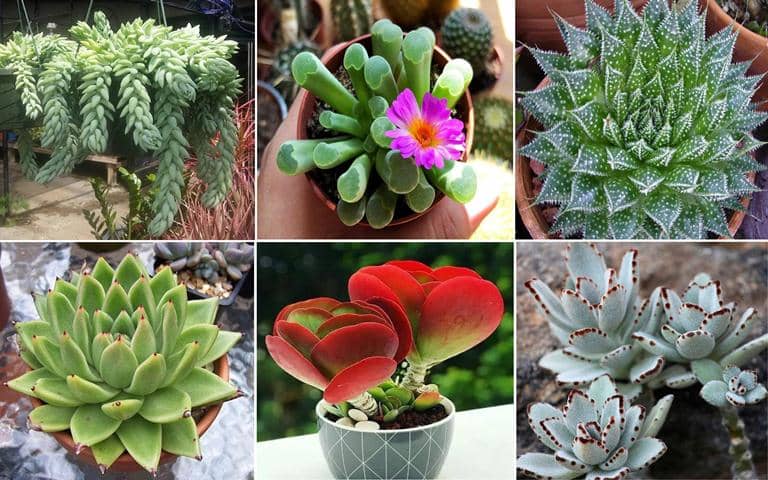
Succulents that need little light
Most succulents grow well in bright, indirect light, but some varieties can tolerate low light conditions.
No succulent will thrive in a complete lack of light, but if you have an area that receives very little natural light, there are still succulents you can grow.
The plants we describe in this article are perfect for those who don’t have a lot of natural light in their home or want to add some greenery without worrying about too much maintenance.
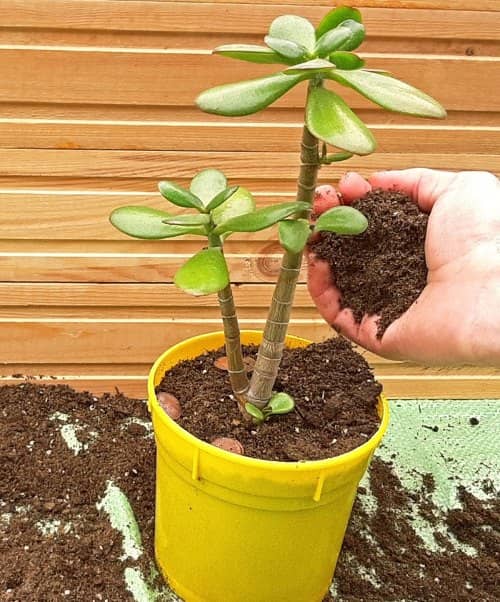
Crassula ovata, also known as the jade tree, is a succulent native to South Africa.
This plant is drought tolerant and can reach one and a half meters in height. It prefers bright light, but can also tolerate low light conditions.
This plant is easy to care for and is a popular choice for novice gardeners. One of the best things about Crassula ovata is its ability to spread quickly. If you have a jade plant that is getting too tall, you can split it into two or more plants.
See: How to propagate and grow the jade tree and its care

Dracaena trifasciata, commonly known as Saint George’s Sword or Mother-in-Law’s Tongue, is a succulent native to West Africa.
It is a hardy plant that can thrive in a low-light environment, making it the perfect choice for indoor growing.
The Saint George sword has long, thin green blades with white stripes down the center.
It is known to be one of the best air purifying plants and makes a great addition to any home. See: air purifiers
See: Growing Sansevieria (Sword of Saint George) and its care
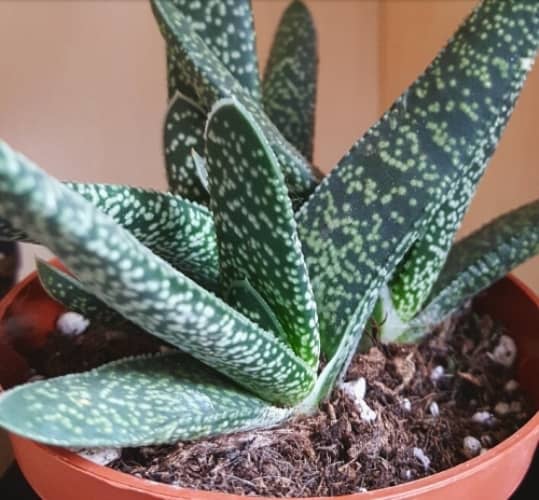
Gasteria batesiana is native to South Africa. It is a small succulent that only reaches about 10 centimeters in height.
If you’re looking for an indoor succulent that needs low light, Gasteria is a great option. This succulent grows well in low light conditions and can tolerate temperatures up to 4 degrees Celsius.
Gasteria is an excellent succulent for beginning gardeners. It is very easy to care for and can tolerate neglect.
It doesn’t need a lot of water and can go long periods without being watered and still stay healthy.
Gasteria is an excellent succulent to have at home. It requires very little maintenance and can thrive in even the toughest conditions.
See: How to Propagate, Grow Gasteria and Its Care

Haworthiopsis attenuata, known as Zebra Plant, is a low-light succulent that does best in partial shade.
It is a small plant, only about 10 centimeters tall, with dark green leaves that have white markings, giving it the appearance of a zebra.
Haworthiopsis attenuata is native to South Africa, is drought tolerant and relatively easy to care for.
The zebra plant is a low-maintenance plant that doesn’t require a lot of water, making it ideal for newcomers to growing succulents.
If you’re looking for a low-light, easy-care indoor succulent, Haworthiopsis attenuata is a great choice.
See: How to Propagate, Grow Zebra Plant and Its Care

Zamioculcas zamiifolia, also known as ZZ Plant, is a succulent native to East Africa.
One of the most popular indoor low-light succulents, the ZZ plant is known for its dark green, glossy leaves.
It can grow up to three feet tall and wide, making it a great choice for large rooms or offices.
The ZZ plant tolerates neglect and can go weeks without water, making it perfect for busy people or people who forget to water their plants.
It does well in low light areas and can survive with only a few hours of sunlight per day.
See: How to propagate, grow ZZ Plant and all its care
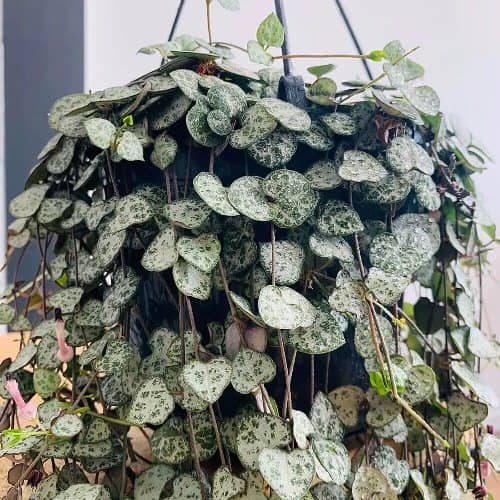
Ceropegia woodii, also known as necklace of hearts, is a succulent native to South Africa.
Chain of Hearts is a drought tolerant plant that does well in low light conditions and is easy to care for.
It can be grown as a hanging plant or on a trellis. This evergreen succulent vine has slender heart-shaped leaves that grow in a rope-like fashion and reach 3 meters in length.
Chain of Hearts is a succulent that grows well in low light conditions and can be grown as a house or garden plant.
It blooms in summer and fall and produces small tubular white flowers.
See: How to propagate, grow Necklace of Hearts and their care

Sedum morganianum, or burro tail, is a beautiful succulent native to Mexico.
It is perfect for those who want to add a touch of greenery to their home but don’t have a lot of space and little light to offer.
It thrives in low light conditions and can be kept as a houseplant or outdoors in a shady garden.
If you’re looking for a succulent that requires little light and is easy to care for, Sedum morganianum is a great choice.
To look at:

Senecio rowleyanus, or rosary plant, is a beautiful succulent native to Africa.
This plant is perfect for those who want to add a touch of greenery to their home but don’t have a lot of space, as it can be grown in a small pot or even hung on the wall.
It performs best in bright, indirect light, but can also tolerate low light conditions.
It is an excellent plant for beginners because it is easy to maintain and does not require much maintenance.
If you are looking for a beautiful houseplant that can thrive in low light conditions, the rosary plant is a great option.
See: How to propagate, grow Cola de burro and its care
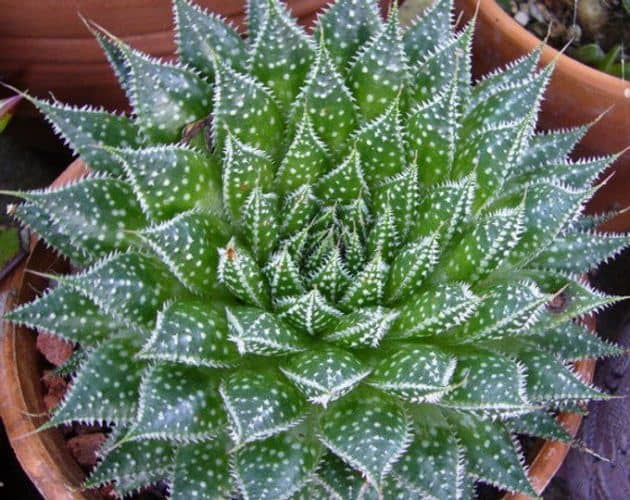
Aloe aristata is a rosette-shaped succulent native to South Africa. It has pretty lacy green leaves with white spots.
Aloe aristata does best in indirect full sun, but can tolerate low light if needed. Getting some indirect sunlight each day will be enough for it to grow well.
Water this plant when the soil feels dry to the touch and ensure good drainage.
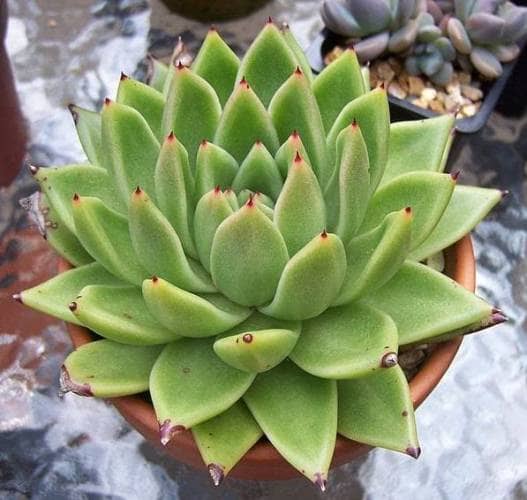
This plant is native to Mexico and can reach about 15 cm high by 30 cm wide.
Echeveria agavoides is a low-light succulent that does well in partial shade.
It has long, rosette-shaped leaves that are bluish-green in color with red tips, giving it a unique appearance.
It is a drought-tolerant plant that requires little maintenance, making it an excellent choice for indoor growing.
See: How to propagate, grow Echeveria and its care
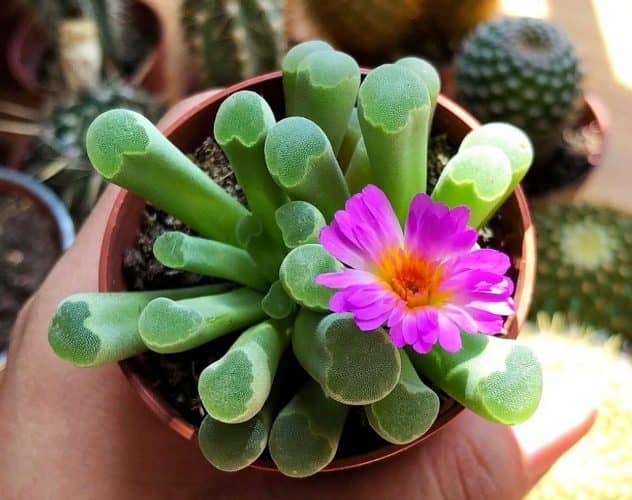
Fenestraria rhopalophylla is a succulent native to South Africa. This plant gets its name from its small, round leaves that look like baby fingers.
Fenestraria rhopalophylla is an ideal plant for low light conditions and can be grown indoors or outdoors. This succulent prefers bright indirect light and does not tolerate direct sunlight.
The plant grows best in well-drained soil and requires moderate watering. Water sparingly when the plant is not in bloom and allow the soil to dry out between waterings.
It is a slow growing plant that can reach a height of 15cm and produces small white and yellow flowers in spring.
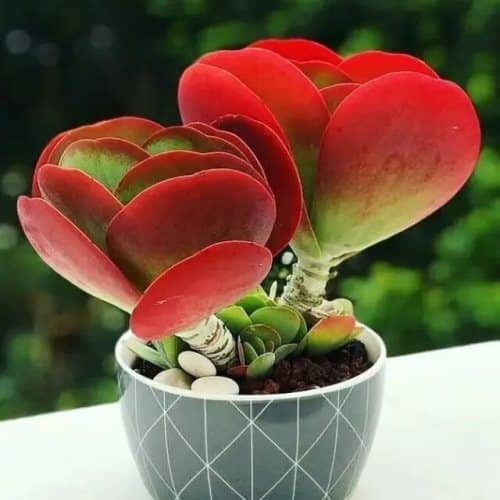
Kalanchoe thyrsiflora, also known as paddle plant, is a flowering succulent native to Botswana, Lesotho, South Africa and Swaziland.
It is a slow-growing succulent that can reach up to 30 cm in height and has large paddle-shaped leaves.
Paddle Plant is an excellent choice for those looking for a low-light indoor succulent, as it does best in partial shade.
It is a plant that tolerates drought well but needs well-drained soil. Water sparingly, as this succulent is susceptible to root rot, and let the soil dry out completely between waterings.
It may also be interesting to read: 7 succulents ideal for purifying the air in the house
This succulent blooms from late winter to early spring and produces beautiful yellow flowers.
Share it on the networks: